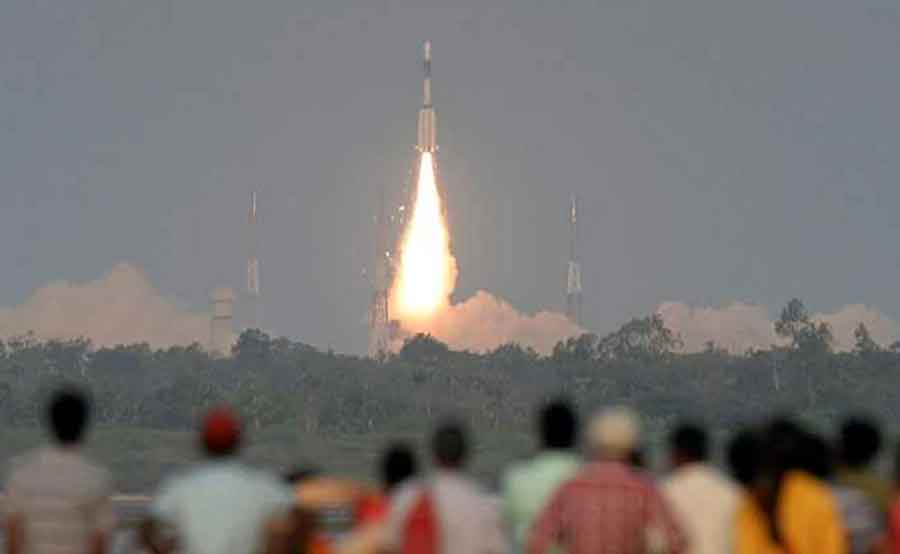2023: Busy Year For the ISRO
Introduction: Whenever we hear the word SPACE, we immediately think of the Indian Space Research Organization (ISRO). ISRO is the Government of India’s first aerospace exploration authority, with headquarters in Bengaluru. ISRO was founded in 1969 with the goal of developing and utilizing space technology for national development, as well as conducting missions to other planets and scientific space research.
While we dive into ISRO and its achievements, we need to take a step backward in time to understand the genesis of Indian space missions. Space research operations began in India in the early 1960s, when applications for satellites were still in an experimental stage across the United States.
Also Read:-

The year 2023 will also see an array of investigations on India’s initially space flight by humans – the Gaganyaan project – with the inaugural uncrewed goal intended for confirming the functioning of the human-rated launch vehicle, orbital module propulsion structure, and recovery processes.
According to ISRO, the Gaganyaan project seeks to show human space flight potential through putting a group of three people into a 400-kilometer orbit for a three-day trip and securely returning them to the Earth through a touchdown in Indian sea waters.
Following the July 14 launch of Chandrayaan-3, the scientists at Satish Dhawan Space Centre have been involved in the spacecraft’s orbit-raising activities, and arrangements for the rocket’s mission to the Moon. The difficult soft touchdown on the lunar surface is scheduled for August 23 at 5:47 p.m.
At present ISRO is also working on the third experimental expedition of the SSLV (Small Satellite Launch Vehicle) and a GSLV mission for the successful launch of the INSAT-3DS satellite. The SSLV, ISRO’s sixth launch vehicle, has flown twice in advancement, in August 2022 and February 2023.
Table of Contents
Following are the ISRO projects for the following 2023 -2024:
The Chandrayaan-3:
The spacecraft is currently on track for its journey to the moon. It will be a 42-day journey. The spacecraft is in an orbit that is elliptical, travelling as far as 41,762 kilometers from Earth and as near as 173 km. The elevation will rise to roughly 220 km in the coming days when multiple measurements and checks are carried out before being moved, free of the Earth, to be caught in orbit round the Moon (translunar injection) a few days afterwards.
India drew a bit nearer to a supervised landing on the Moon on 7th August 2023, when its Chandrayaan-3 spacecraft joined lunar orbit, moving towards the surface’s undiscovered South Pole. The Indian Space Research Organization reported that the spacecraft also completed its scheduled orbit lowering maneuver safely. The mission is slated for landing on the moon on August 23. If this endeavor succeeds, India will be only the fourth country after the United States, the former Soviet Union, and China to accomplish the difficult accomplishment.
It is India’s second try at landing smoothly, following the failure of the Chandrayaan-2 in 2019. Its first lunar mission, Chandrayaan-1, circled the moon before deliberately crash landing on the moon’s surface in 2008.
Aditya L1:
It will be India’s maiden space-based mission for investigating the Sun. The spaceship will be positioned in a circular orbit around the Sun-Earth system’s Lagrange point 1 (L1), which is approximately 1.5 million kilometers away from the Earth. A spacecraft orbiting in peripheral orbit around the L1 spot has the significant benefit of constantly observing the Sun with no occultation/eclipses.
This will give scientists a better chance of seeing solar activity and its impact on the space weather in the present moment. The spacecraft includes seven payloads that will use electromagnetic, particulate, and magnetic fields detectors to study the light spectrum, the chromospheres, and the Sun’s uppermost elements (the corona).The expected launch date for Aditya L1 is 26 August 2023.
X-ray Polarimeter Satellite:
It is expected to be propelled in 2023 on a Small Satellite Launch Vehicle (SSLV) and to offer a minimum of five years of service. XPoSat will investigate the universe’s 50 strongest identified objects such as pulsars, black hole X-ray binaries, active galactic nuclei, and non-thermal supernova remnants.
Gaganyaan:
Gaganyaan will be deployed by ISRO around the end of 2023 or early 2024. As stated by ISRO, the Gaganyaan endeavor seeks to demonstrate a human space flight potential by sending a team of three people into a 400-kilometer orbit for a three-day trip and securely returning them to the Earth by resting in Indian sea regions.
ISRO also intends to use sensors for remote sensing, meteorological projections, and monitoring of the environment to track the investigation and oversight of national natural assets. Numerous domestic satellites, spacecraft for launch, space orbiters, and rockets were developed and launched as part of the Indian Space Programmes.
Conclusion:
The effective launch and maintenance of multiple satellites and space launchers is one of India’s outstanding accomplishments in space. It is encouraging to observe that the government has made significant investments in Indian space programmes during the last two decades. The Indian Space Programme has advanced in a great way, but it still has plenty of miles to go before it can position India as the world leader in aerospace technologies and research.













































